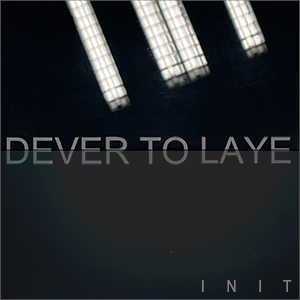“After many years of playing with all sorts of gadgets and effects, I was kind of tired twiddling knobs to make music. I wanted to concentrate on our instruments and try to produce new sounds just by using our hands and imagination.” (Stephan Thelen)
Less is more
Sonar is a well-oiled machine. A dynamic living and breathing mechanism made of six equally essential parts: Stephan Thelen (guitar), Bernhard Wagner (guitar), Christian Kuntner (bass), Manuel Pasquinelli (drums). The tritone (a.k.a. diabolus in musica) and reverb are the two other parts. For the sake of avoiding compositional banality and sonic recycling, the band works according to self-imposed rules; however, it has no problem bending or even breaking them occasionally as long as it serves its purpose.
Next month, the mighty Washington-based Cuneiform imprint will release Sonar’s third studio album (second for the imprint) Black Light, which is without a doubt the Swiss band’s most effective work to date. With Black Light Sonar takes its sound and style to the next level. The unique combination of mystery and power the band is known for has been enhanced and is now even more electrifying and addictive. Like fine wine, these guys get better with age. The sound is fuller and sharper than before. The textures are richer and the colors brighter.
Recorded—live in the studio with no overdubs—and mixed by David Bottrill, and on top of that mastered by John Cuniberti, the album emits raw stimulating energy of an intense live performance. Two guitar currents circulate and sparkle hypnotically, warm deep basslines hit with assertiveness and groove, drums pound with finesse and might. Luminous, alluring, dangerous. No one tries to stand out. No one tries to lead the way. It’s a distinct group effort, and just like in all of the band’s previous efforts, interaction, mutual intensification, spaciousness, surgical precision and a less is more approach are key elements. Each composition unfolds in a suspenseful manner, oozing tension, slowly but surely taking hold of the listener, eventually leaving him/her energized, captivated and longing for more. A brilliant display of the band’s uncanny morphing ability.
Although Robert Fripp, Steve Reich and Nik Bärtsch are often mentioned by Thelen as sources of influence, Sonar doesn’t impersonate them. Instead, the band embraces certain qualities of their work and utilizes them in its own with its distinctive spell. It was always difficult to put a genre tag on Sonar. Armed with new shades and an even more mind-bending sound, Black Light makes it even harder to categorize the band. One thing is clear, Sonar is a highly creative and original nocturnal entity constantly evolving in order to provide immersive and challenging instrumental music that stimulates the mind, body and soul.
 The story?
The story?
Thelen :: Bernhard and I met in 2005 and immediately noticed that we had similar interests (minimal music, polyrhythms, looping technique, experimental guitar music, etc.), despite the fact that we had very different musical backgrounds (prog vs. funk). We both lived in Zürich, so we often met and talked a lot about ideas and music and also jammed and played together in various formations. I am a mathematician and Bernhard is a software programmer, so we were always also interested in the structural side of music. We occasionally spoke about forming a band, but I always felt that we needed a very strong and unique concept before we should even think about finding other musicians.
One day in 2010, I remembered that I had once used an alternate tuning for the guitar, where the strings are tuned in tritones. It seemed a rather bold idea to exclusively use that tuning for a new project, but the idea kept going around in my head so I asked Bernhard for his opinion. We noticed that the natural harmonics of that tuning produced a beautiful, very mystical sound and that we could play a new type of power chord on all six strings. So we went forward and invited Christian and Manuel to a rehearsal. I knew Christian from another band I had played in and was sure that his deep bass and intuitive energy would be a perfect counterpoint to the chiming guitars and slightly more intellectual approach of Bernhard and mine. Bernhard had met Manuel in one of Nik Bärtsch‘s workshops and knew that he could handle all the tricky polyrhythms. Our first rehearsal is one of my best musical memories: everything just worked perfectly and the chemistry in the band was great from the first minute. We all knew that we had something really great going on and that the concept for the band was really strong.
Our first album A Flaw of Nature was released on Nik Bärtsch’s Ronin Rhythm label. The US distribution of that label is through Wayside Music, which is owned by Steve Feigenbaum, who is also the owner of Cuneiform Records. Steve wrote so positively about our CD on the Wayside website, so I contacted him, and that led to Cuneiform releasing our second CD Static Motion. We are very happy that—due to the success of Static Motion—Steve immediately agreed to continue our collaboration and release our new album Black Light.
 Sound & style?
Sound & style?
Thelen :: Before our first rehearsal, I sent the other guys a list of ideas and no-goes that I thought should be an important part of our concept: 1) No effects (except reverb). After many years of playing with all sorts of gadgets and effects, I was kind of tired twiddling knobs to make music. I wanted to concentrate on our instruments and try to produce new sounds just by using our hands and imagination. 2) No sequencing or loops. After often playing with sequencers, I felt that I had enough and wanted to re-experience the joy and the spontaneity of playing in real time with real people. 3) A minimal „less is more“ esthetic « Make the most out of a minimum of ideas » is the best advice you can give to a composer. Very often, creative people have many ideas and cram them all into one piece, to the point that it all sounds random. For me, the best pieces of music are the ones based on one simple idea that organically leads to complex results.
4) Be small & mobile and use a minimum amount of equipment. 5) The guitars and the bass should play harmonics whenever possible and use the tritone tuning exclusively. 6) The music should have a raw, strong and intuitive energy to balance the obvious cerebral and intellectual concepts. 7) No standard 4/4 rhythms, no common phrasing. The key to Sonar’s music is its polyrhythmic and polymetrical nature. I believe that most of the music of the Western world is rhythmically underdeveloped. Harmonically, the step from monophonic to polyphonic music has long taken place, but a similar step in rhythmic and metrical complexity is still to be taken. A piece like « Orbit 5.7 » (track 3 on Black Light) is a good example of the kind of rhythms I wanted to explore: basically, Bernhard’s guitar and the cymbals play in 7/8, while the bass drum, snare and bass guitar play in 5/8, and the lead guitar plays in 3/8, 5/8 or 7/8. But the important thing is that it still has a very compelling multidimensional rhythmic flow and still really grooves.
8) No solos, no virtuosity. This was important. I think we live in a society where music is far too closely associated with the idea of a virtuoso or star performer. I rarely enjoy listening to a virtuoso because the focus is automatically on their calisthenic abilities, not the quality and content of the music. For me, it was important that Sonar would play together like an orchestra without a conductor. You said it very nicely in your Static Motion review: “This quartet is not into empty technique displays and endless pointless solos. These guys are not here to show off or impress anybody. These guys are all about playing together as a crystallized unit that generates deadly wholes by equally combining its members’ strengths. They don’t outshine each other, they intensify each other.”
 The new album?
The new album?
Thelen :: For me, Black Light is a metaphor for something which is very mysterious, but at the same time simple and clear. We decided to put a light bulb on the cover, which of course has been done before, but using the negative image of the bulb so that the light turns black. This seemed to me to be a simple but good way to express the music in visual terms. An important step for us was the decision to work with well-known people in the music production field and let an outsider mix the music. David Bottrill was on the top of my list and luckily he immediately agreed to work with us. The mastering was done by John Cuniberti, a world-class mastering engineer recommended to us by Anil Prasad. Working with David was a very good experience. He is a good listener, has no ego problems and was always keen to help us find our own solutions. He also gave us a lot of self-assurance, as we knew we were in the hands of an experienced professional. John Cuniberti, a true expert in the field of mastering, found exactly the right sound for us and did a really excellent job. I never met him though, we just sent him the files and he sent them back perfectly mastered.
When we started to play together, I really wasn’t sure if we could stick to our concept for longer than one album. But the group developed a life of its own and we managed to take a lot of ideas to the next level. New ideas also kept coming in. Besides, we’re not too dogmatic about our concept, for instance in « Angular Momentum » (track 4 on Black Light) I tune one string down to an « F », so strictly speaking, it’s not the tritone tuning anymore. I do consciously try to avoid repeating myself. Sometimes I bring things to the rehearsal room and the other guys look at me saying « That sounds exactly like … », in which case I usually give up that idea or at least reconsider. The way we think about rhythm really has opened up endless possibilities. Like I said before, I think we’re just at the beginning of a new era where multidimensional rhythms in different metrical cycles will become more common.
The LP version of Black Light has two live bonus tracks on Side 4: “Tromsø” recorded live at Bazillus, Zürich, November 27, 2012—studio version released on our first album A Flaw of Nature (Ronin Rhythm Records 009, 2012 )—and “Twofold Covering” recorded live at Exil, Zürich, April 24, 2014; studio version released on Static Motion (Cuneiform Records Rune 374, 2014). “Tromsø” is on the digital album Live at Bazillus, but the version on the LP is a new mix. “Twofold Covering” is from the YouTube video (same mix). These two tracks are also available on Cuneiform’s bandcamp site. Andi Pupato’s remix of « Orbit 5.7 » is available only on Cuneiform’s bandcamp site and on YouTube. I sent Andi the original tracks recorded in the studio and he added percussion at his studio at home here in Zürich and remixed the whole track. I really love « Orbit 5.7 ». It is played with precision, passion and power. It has a joyful quality, but still a lot of mystery in it. The video is also very good, filmed on a full moon night on the terrace of my apartment overlooking the nightscapes of Zürich…
 Live?
Live?
Wagner :: Our next gig is the CD-Launch party on September, 29th. We’ll be playing at Exil Club, Zurich, a club with quite a tradition, as Nik Bärtsch’s Ronin play there on a weekly basis. We’ve done the launch parties for our previous CDs there, too. Next gigs are in Germany and Austria: Aachen and Würzburg in October, Freiburg, Innsbruck and Ulm in February 2016. We often use our live gigs to test out new material, see how it endures a live situation, if it keeps the audience on their toes, or do we lose their interest.
We have a particular way of setting up the stage (seen from the audience): Bernhard far left, then Christian, then Manuel, then Stephan. We play as a very agile group, we can quickly set up in any location. We’ve been playing on huge stages down to the narrow slots of a tiny record store.
Our main goal for this band is to play live. We enjoy it immensely. There’s a challenge to playing those pieces: It doesn’t consist of virtuosity (except maybe for Manuel, the drummer, who needs to play three independent metres with four limbs almost through all compositions), but rather in concentration on the structure of the piece, slowly evolving dynamics, the interlocking of parts, feeling out how much freedom and improvisation certain parts of a composition can carry. It is very enjoyable to move from almost inaudible sections to raw energy spewing parts in a single concert or even a single composition. It is equally fun to perceive the effect on varying audiences: informed elderly museum-visitors to young, crazy open air spectacle visitors. They all pick up on different parts of our spectrum and we enjoy catering for all of them.
 Memorable reaction?
Memorable reaction?
Wagner :: A great reaction we got from one listener was that he went right ahead and composed a piece himself, using our tuning! It’s great to know that someone was inspired not only by a particular piece, but by the underpinning concept of our music. Another memorable reaction was when we played at Band On The Wall in Manchester. We made a short break between sets, but even in the break, members of the audience queued at our merch table to buy our CDs.
Thelen :: Nik Bärtsch said two interesting things about our music: first he said that it takes a while to get used to our sound, but once your in, you don’t want to leave. And recently he said that what he likes about our music is all the things that we don’t do.
 On heavy rotation?
On heavy rotation?
Wagner :: As a matter of fact, I hardly listen to music nowadays. It’s not a conscious decision, it’s just that I like to deeply listen to stuff instead of “while doing something else”. This means I have to plan some time to listen to a record. I often pick an artist that has recently been interviewed (like on the excellent Innerviews by Anil Prasad for instance), or that is mentioned by other artists as collaborator or influence.
Thelen :: Recently I have been listening to David Torn’s album Only Sky, Schnellertollermeier’s X and Dawn of Midi’s Dysnomia. After many years, partly because of the death of Chris Squire, I also revisited Yessongs, probably my first musical true love when I was a teenager (before – like Bill Bruford – I « left » Yes for King Crimson). To my surprise, I noticed that The Fish, one of the best tracks on Yessongs, has many similarities with the music of Sonar.
Sonar | Black Light | Cuneiform | Sonar on Bandcamp | Band photo by Reto Andreoli






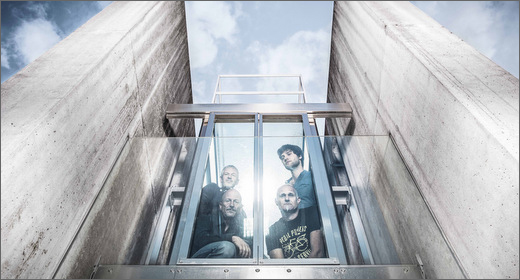



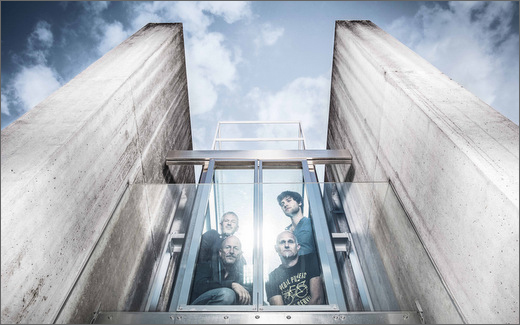
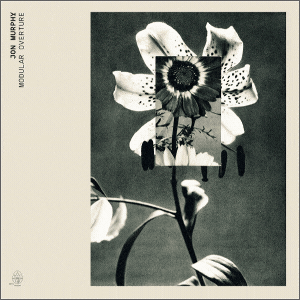

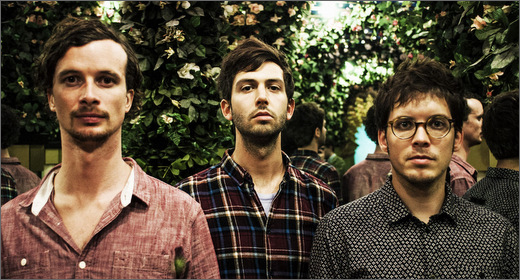
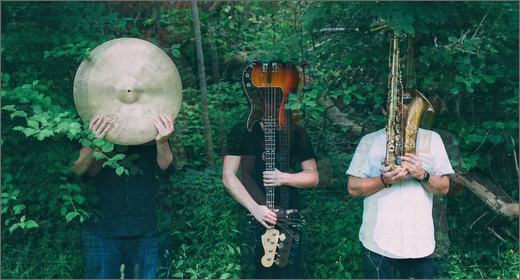

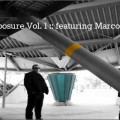


![Romanowitch :: A critical season substitute (glitch.cool) — [concise]](https://igloomag.com/wp/wp-content/uploads/2025/03/romanowitch-a-critical-season-substitute_tape_feat-75x75.jpg)







